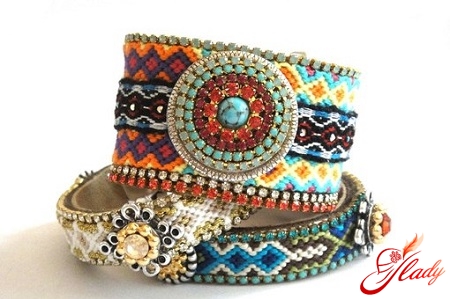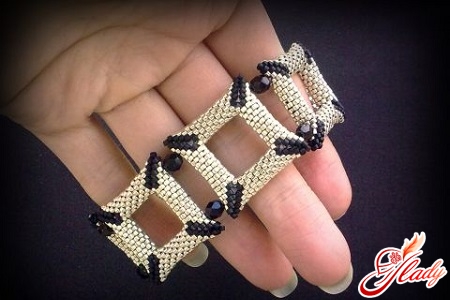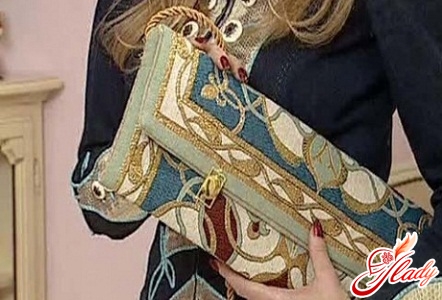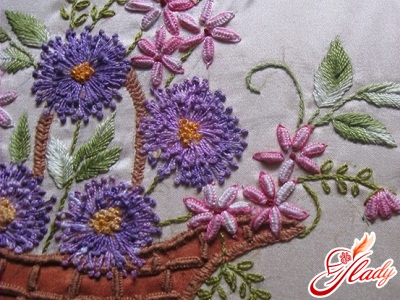
Weaving baubles for beginners canmay seem like a difficult task, but this illusion disappears immediately after finishing weaving the first bauble. Baubles are familiar to many of us from school days. Those who were not directly involved in weaving, probably received them as a gift or at least saw how others weaved. What is a bauble? It is a small bracelet on the hand, made for yourself or for a loved one. It is believed that even the Indians wove these wonderful decorations for each other. The tradition of exchanging homemade jewelry was adopted by hippies. Most often, baubles are woven by teenage girls as gifts for girlfriends and friends. Today, a bauble (especially a pair) is a symbol of friendship and a good attitude towards a person. As a rule, a bauble is created for a specific person. Its purpose is to express sympathy, wishes for good, luck and other benefits. Nevertheless, today many people weave baubles to order and simply sell ready-made products. Baubles are woven from bright threads (mouline, iris, poppy and others), as well as from beads, leather cords. Exotic types of modern baubles are products made of thin colored wires and knitted bracelets (crochet and knitting). Among all types of baubles, a special place is occupied by beaded jewelry woven on a fishing line. They do not change their appearance over time, do not wash off, do not wear out, preserving their original beauty. Working with beads and fishing line is very simple, so weaving baubles for beginners will not turn into something more like the knotted writing of Indian tribes. There are quite a few bead weaving techniques. Let's consider 3 simple ones that all beginners can handle.

Materials and tools that will be needed in the work
- fishing line 0.2 mm in diameter;
- beaded needle (1-2 pcs.);
- beads № 11 (usual) in different colors;
- saucers or other convenient containers according to the number of colors of the beads;
- accessories (fasteners / locks);
- sharp scissors;
- scheme braiding baubles.
The thinner the line, the more elastic it is (betterstretches) but the tensile strength of such a line will be lower. Beading thread is a very thin line, the diameter of which is only 0.12 mm. Beginners may not be able to cope with a twisting and tangling thread, so it is better not to take it. For getting acquainted with bead weaving, the optimal size is 0.2 mm. The needle should be the thinnest (and longest) possible. It is called a beaded needle. It is sold in all sewing and handicraft stores. No. 11 is the most common bead size. A product made from it looks neat and very beautiful. This size allows you to create interesting patterns and ornaments on a small area of the bracelet, accommodating quite a lot of beads, and the craftsman does not strain his eyes, which is also very important. Before starting to weave, regular (Czech, for example) beads must be calibrated, that is, manually sorted by size, choosing approximately the same beads. There are high-quality beads of Japanese production (TOHO, MIYUKI). Its distinctive features are: firstly, the same size for all beads in the package, and secondly, their rather large hole, which is very important for beginners. The large diameter of the hole allows you to repeatedly thread the needle with a fishing line into the same bead. Ordinary saucers or lids are quite suitable as a container for pouring beads. It is easiest to string beads with a needle directly from them. Accessories in beading are a separate big topic. Almost any bauble implies some kind of fixing mechanism. When creating a new bracelet, pay attention to hook locks and toggle locks. Often they give the product a special charm and appeal. Sold in online stores of handicraft accessories. Sharp scissors are needed to make the end of the fishing line as thin as possible. This makes it easier to thread it into the needle. Without a pattern for the bauble, it is better not to start working at all. Before starting any weaving, you need to create (or find a ready-made) pattern for the future product.
Techniques of weaving baubles
Simple friendship bracelets are ideal for beginners.Straight weaving (hand weaving) This technique is convenient for weaving baubles with text (for example, a friend's name). The beads are arranged in even rows both horizontally and vertically. The result is a long strip. You will need a fairly long fishing line, so it makes sense to cut 1.5 m from the spool, and when it ends, cut another 1.5 m, which must be connected to the work.
Cross stitch (2 needles) Perhaps this isone of the simplest types of weaving a bauble. It allows you to create loose but uniform patterns. Such a bauble will not stretch either in length or width. For a small bauble you will need 1.5 m of fishing line.
Snake Simple and effective technique.Allows you to close the bauble into a ring and not use any fasteners. It is woven on 1 needle. You will need about 1 m of fishing line. We will weave a gold bauble with a blue center.
Thus, the mechanism for weaving baubles turned out to be quite simple.









